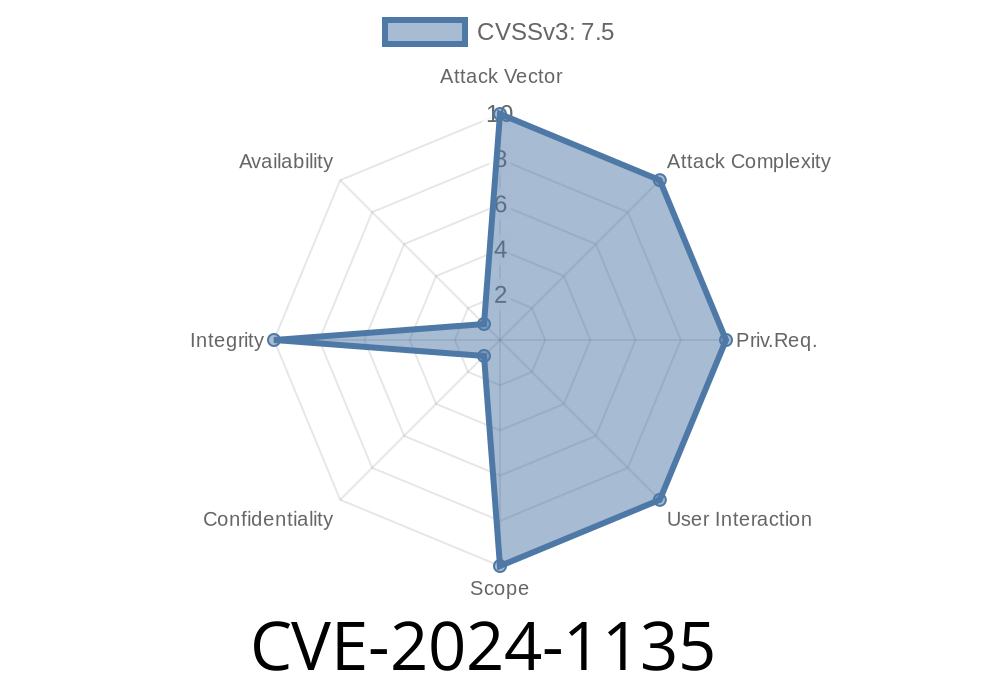CVE-2024-1135 - Gunicorn Vulnerability Allows HTTP Request Smuggling through Improper Validation of Transfer-Encoding Headers

CVE-2024-1135 refers to a vulnerability recently discovered in Gunicorn, a popular Python Web Server Gateway Interface (WSGI) HTTP server. Gunicorn fails to properly validate Transfer-Encoding headers, which consequently exposes the server to HTTP Request Smuggling (HRS) vulnerabilities. By exploiting this vulnerability, attackers can craft requests with conflicting Transfer-Encoding headers in order to bypass security restrictions and access sensitive endpoints. This issue stems from Gunicorn's incorrect handling of Transfer-Encoding headers, where it processes requests with multiple and conflicting headers as chunked, regardless of the final encoding specified.
Exploit Details
This vulnerability allows attackers to carry out a range of attacks such as cache poisoning, session manipulation, and data exposure, by taking advantage of the HRS attack vector. To exploit this vulnerability, an attacker can craft a request with conflicting Transfer-Encoding headers, like so:
POST / HTTP/1.1
Host: vulnerable.site
Content-Length: 4
Transfer-Encoding: chunked
Transfer-Encoding: identity
Content-Type: application/x-www-form-urlencoded
1
X=1
In this example, Gunicorn will treat the request as chunked because it doesn't properly validate the conflicting Transfer-Encoding headers and prioritize the identity header, which actually indicates an unchunked request. This can lead to the attacker being able to smuggle requests to the server and having the server treat the smuggled requests as valid, potentially leading to cache poisoning, session manipulation, or data exposure.
Related References
1. Gunicorn - Original Reference
2. CVE-2024-1135 - Attack Demonstration and Mitigation Strategies
3. HTTP Request Smuggling - Overview
Mitigation
While Gunicorn has not yet released a patch addressing this vulnerability, there are several mitigation strategies that you can implement on your server to reduce the impact of this issue:
Configure your reverse proxy or load balancer to filter out invalid Transfer-Encoding headers.
2. Use a WAF (Web Application Firewall) or other security solution to detect and block attempts to exploit CVE-2024-1135.
3. Configure your server to guard against HTTP Request Smuggling attacks by validating the order and format of headers.
Incorporate a Content Security Policy (CSP) to help protect your users from cache poisoning attacks.
Keep an eye out for updates from the Gunicorn project and be ready to apply patches or upgrades as they become available. By implementing these mitigation strategies and staying up-to-date with the latest security releases, you can help protect your servers and applications from potential attacks exploiting this vulnerability.
Timeline
Published on: 04/16/2024 00:15:07 UTC
Last modified on: 04/16/2024 13:24:07 UTC